In the realm of football transfers, clubs must carefully consider a multitude of factors. This intricate task involves assessing whether the player fits into the team's system and playing style, how susceptible they are to injuries, etc., while from a financial point of view their salary demands, desired signing bonuses, agent fees, and many other factors are also important. Among these considerations, the most eye-catching and heavily debated is often the transfer fee. However, fees frequently stray from a player's estimated market value, leading to discussions of better and worse deals from the perspective of both the selling and buying sides.
Our analysis delves into the perceived bargains and overpriced transfers of the 2023 summer transfer season, comparing players' market values (as calculated by Football Benchmark) to their respective transfer fees.
Market value: Right on the money
When analysing these transfers, we're essentially examining a snapshot of the market, looking at how a player’s last available market value at the selling club compares to how much the buyer eventually paid for them this summer. The market value estimation is based on comparable deals in the past, the quality of the player’s recent on-pitch performances, their position, age and contract situation, among many other factors. As such, it is an apt indicator as to how much the buyer should have paid for securing the services of the player.
At the other end, the transfer fee is also influenced by factors such as the duration of the player's remaining contract at the selling club, the urgency of the buying club’s needs, prevailing market trends for similar players, the player's commercial value, and countless other aspects.
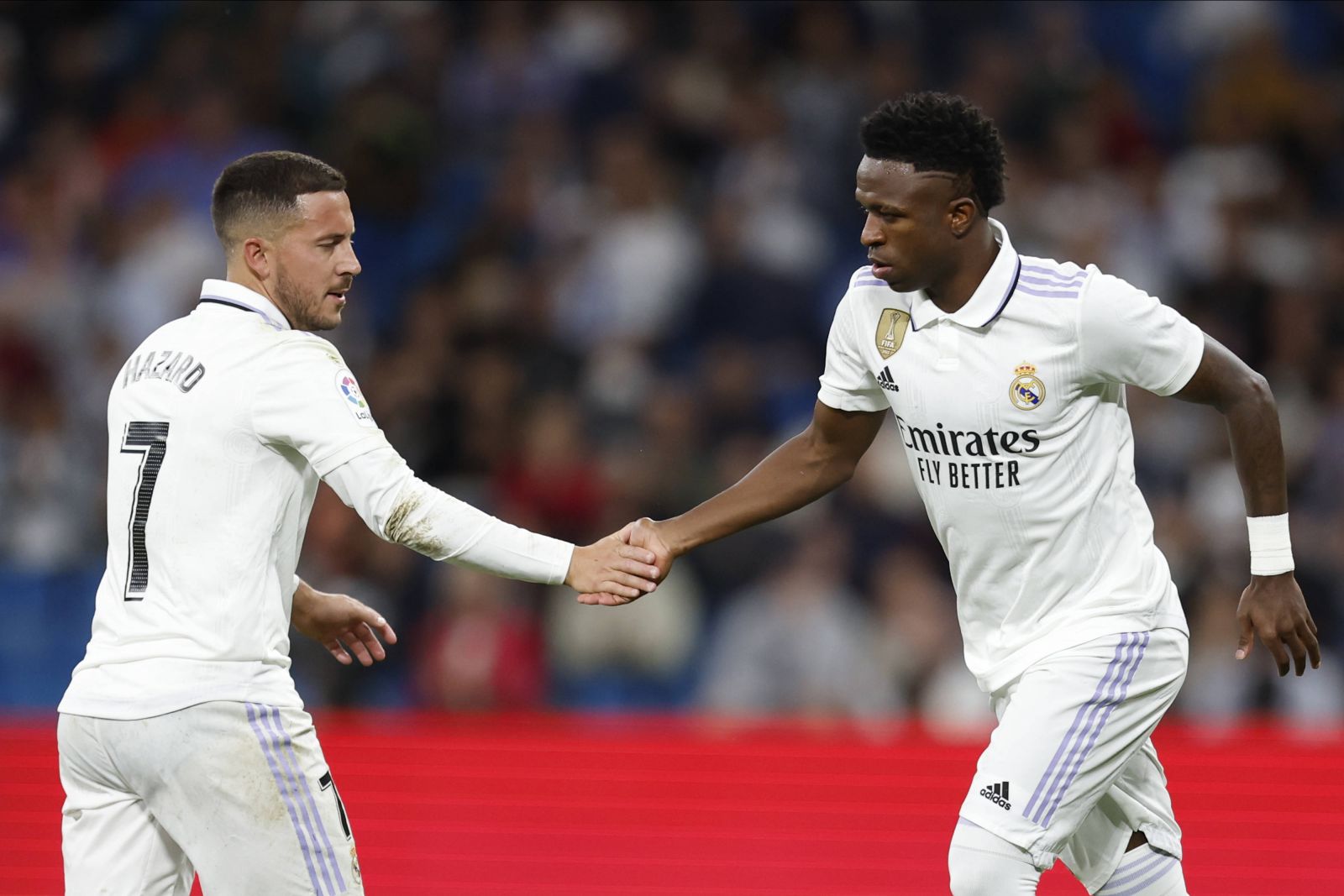
However, past performances do not necessarily dictate future success; players can often outperform or underperform what their valuation might have suggested, at their new clubs. The football world has witnessed a myriad of scenarios: high-priced players excelling or disappointing, ‘cheap’ acquisitions becoming outstanding players or forgettable signings. One of the unfortunate stories this summer was the termination of former Premier League ‘Player of the Season’, Eden Hazard’s contract by Real Madrid. The club paid €115 million to Chelsea for his services in the summer of 2019, but unfortunately, he was never able to regain his Premier League form with Los Blancos. Meanwhile, Vinícius Jr., who inherited Hazard's shirt number this season, now boasts a market value of €157.5 million, with Real Madrid having paid just €45 million for his playing rights in 2018. He is a great example of a player who has been able to increase his estimated value continuously through sustained great performance.
Potentially overpriced?
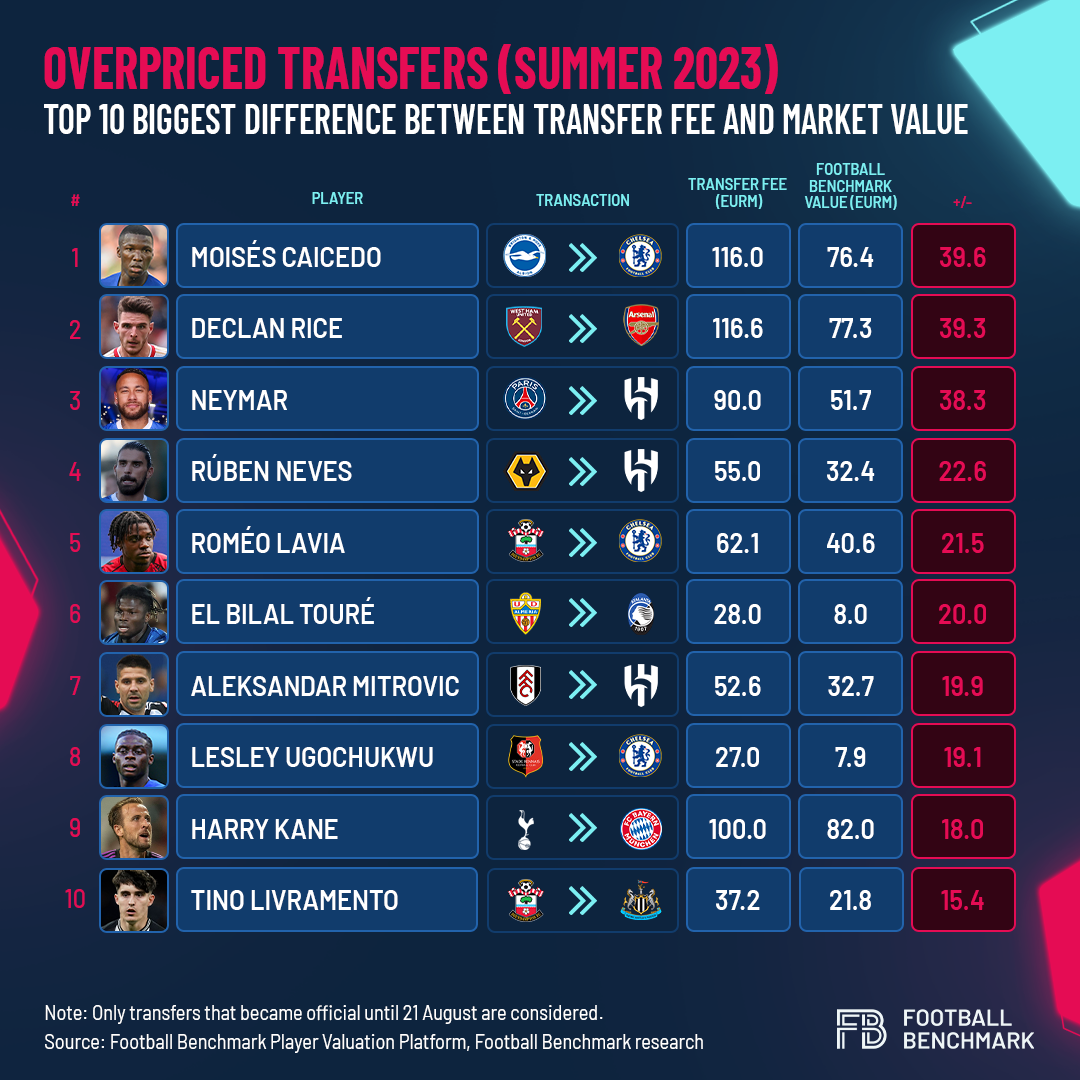
At the top of our list of potentially overpriced transfers is Moisés Caicedo, for whom Chelsea paid €116 million to Brighton & Hove Albion. The player's market value at the start of the transfer window was €76.4 million, indicating an overpayment of almost €40 million for his transfer. In second place stands Declan Rice, for whom Arsenal shelled out €116.6 million, while his market value was €77.3 million. This transaction occurred with only 12 months left of Rice's contract (with an option for a further year). Interestingly, both players play the “number 6” position in the midfield and rank among the Premier League’s top five most expensive transfers ever.
Chelsea secured another talented defensive midfielder, acquiring Roméo Lavia from Southampton at a surplus of €21.5 million over his pre-transfer market value.
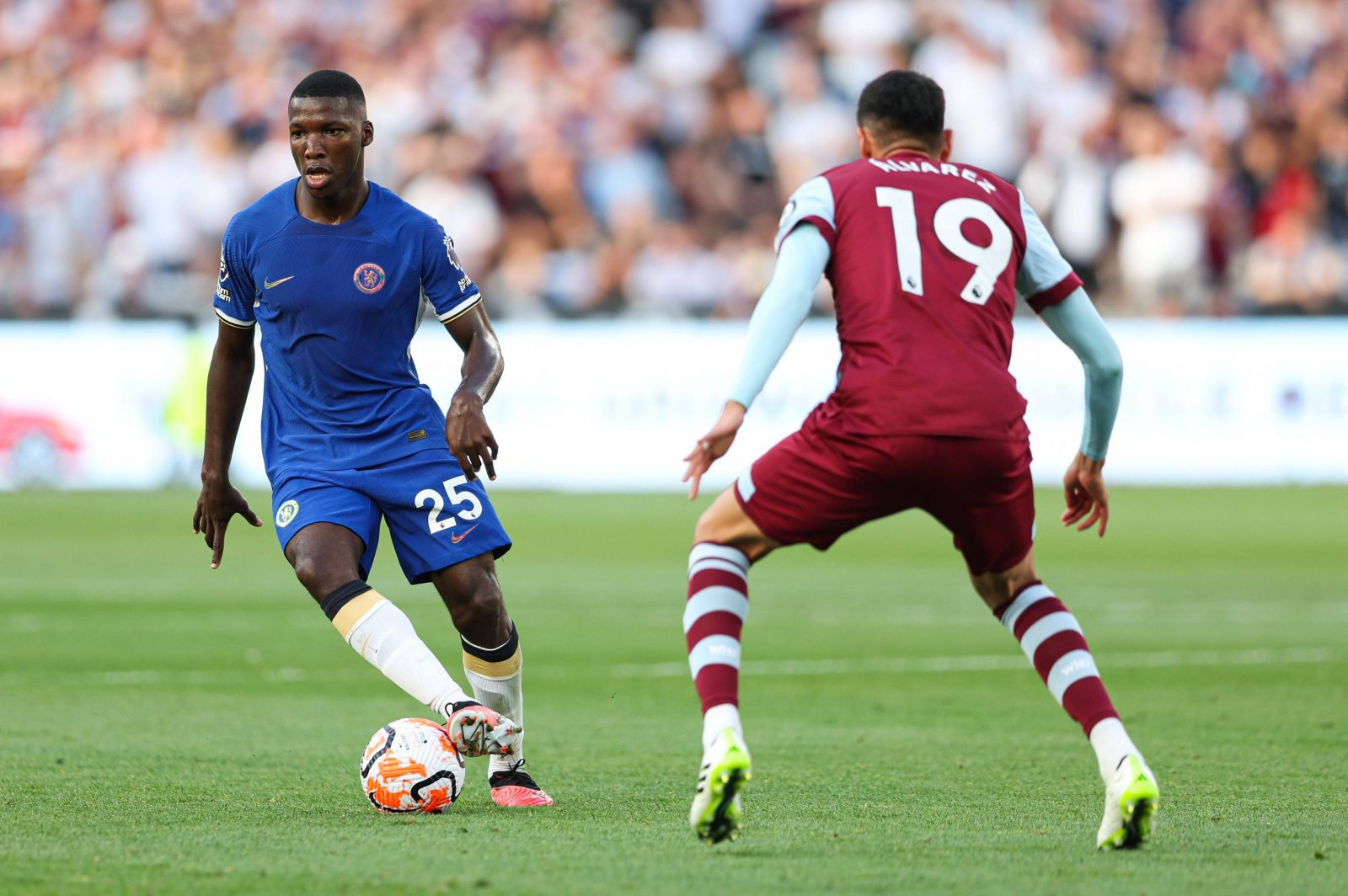
The Saudi Pro League's Al-Ahli SC features thrice on our list, having collectively overpaid by €80.8 million for Neymar Jr., Rúben Neves, and Aleksandar Mitrovic in light of their market values. Neymar, a global superstar, exemplifies the importance of considering marketing value alongside market value, boasting over 400 million followers across social media platforms.
Interestingly, five out of the top six spots are occupied by defensive midfielders. This prompts us to wonder what the likes of Xavi, Claude Makelele, or Sergio Busquets would command in today's market.
One of the prominent names on the list is Harry Kane. Despite having just 12 months left on his contract, Tottenham managed to receive €100 million from Bayern München for the English striker's playing rights, exceeding his market value by €18 million.
It is also important to consider that in many cases clubs are paying for players’ future potential (see the likes of Touré and Ugochukwu on the list). As the Football Benchmark methodology is mostly based on past sporting statistics, future expectations carry less weight, which might explain the difference between market value and transfer fee in those cases.
Potential bargains?
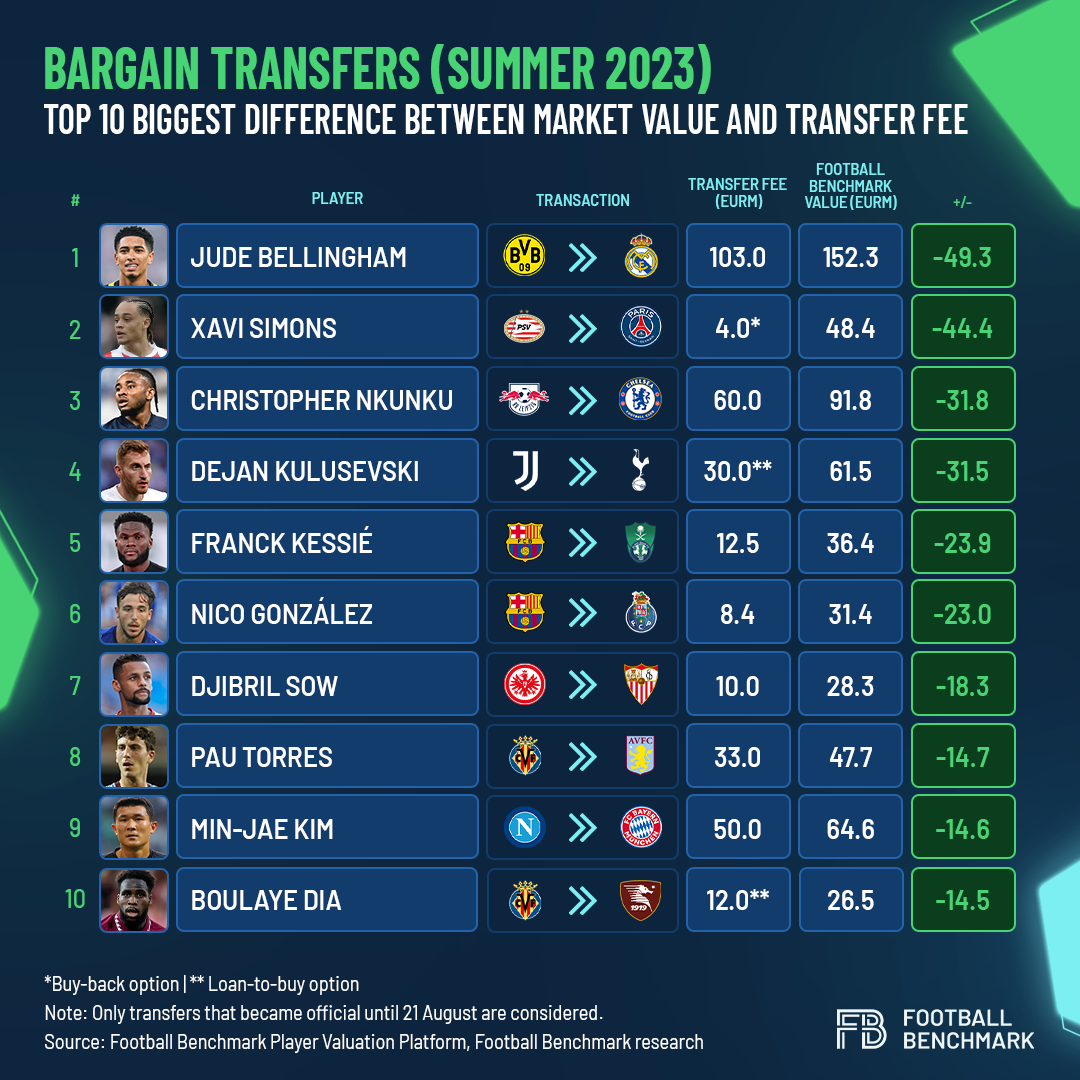
Could one of the most expensive transfers of this season also be one of the ‘cheapest’? Jude Bellingham's market value was €152.3 million before his move to Real Madrid from Borussia Dortmund in a deal with a transfer fee of ‘only’ €103 million (not accounting for future add-ons). Bellingham, a strong nominee for this year's Golden Boy award, has already scored three goals in his first two competitive matches, suggesting that Real Madrid have made a prudent investment despite the hefty price tag.
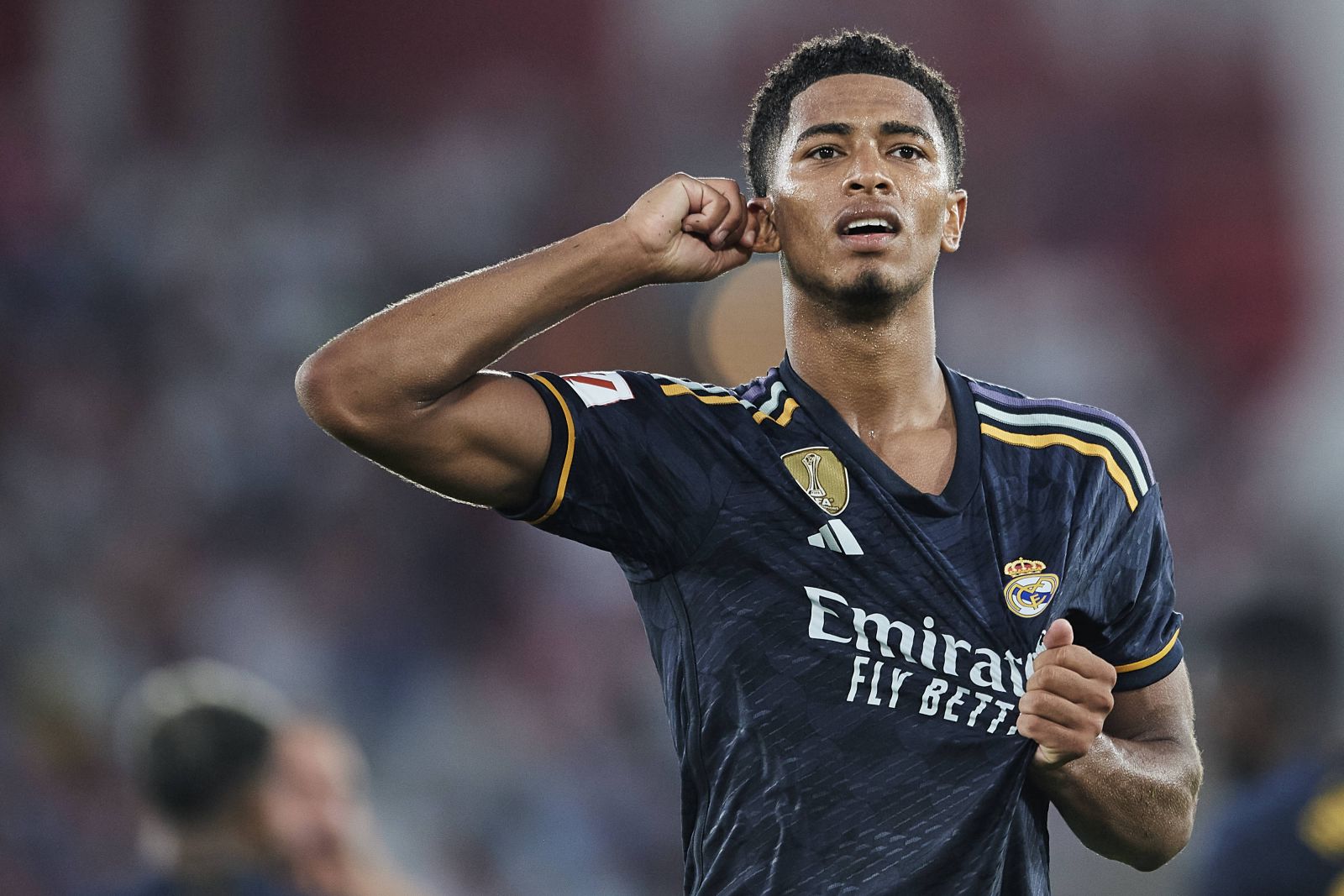
Chelsea have undeniably dominated transfer discussions in recent seasons, making substantial payments for various players. Christopher Nkunku's case stands out as they acquired him for over €30 million less than his market value, which makes this transfer the third on our list. However, the team suffered a significant setback as Nkunku succumbed to injury in pre-season.
There are two transactions on the list involving FC Barcelona as sellers. The Spanish giant's financial struggles have garnered headlines in recent months, consequently, they aimed to maintain a positive balance in this year's transfer market. Yet, they let several players go below their market values. The Frank Kessié and Nico González duo, for instance, fetched the club a total of €46.9 million below their combined market values. This implies that the club had limited bargaining power, as they had to sell.
In other cases, in the top 10, the difference between market value and transfer fee can be explained by loan-to-buy and buyback options. Even if the player increases their value in the meantime (e.g., Kulusevski at Spurs), the buying club only has to pay a fee that was determined much earlier.
As the curtain rises on another football season, these transfer stories have captured our attention with their intriguing dynamics. While transfer fees are a crucial benchmark, they only mark the beginning of a player's journey with their new club. The real tale is yet to be written on the pitch, where these players will showcase their talents, adapt to new systems, and potentially become the driving forces behind their teams' success. The football world eagerly awaits the unfolding of these narratives, reminding us that the magic of the beautiful game transcends the numbers.


